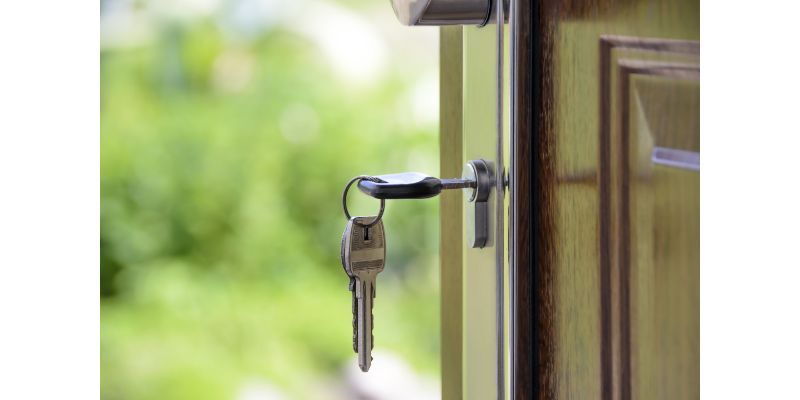Renting has surpassed homeownership in various states across the United States. Homeownership no longer guarantees wealth accumulation; both young and old opt to rent nowadays. However, instead of renting apartments, many people are opting for build-to-rent homes in order to become a part of a whole new community. This tutorial will provide you with a more in-depth look at build-to-rent homes communities, investors, and developers.
All previous records were broken when around 6,740 new build-to-rent homes were sold in 2021. In fact, a recent study predicts that around 14,000 new build-to-rent homes will be sold this year, making 2022 the most profitable year for this business. Build-to-rent homes combine the convenience of renting with the advantages of a single-family home.
When developers come in and create various build-to-rent communities, it opens up a whole new way of living a decent life. So, if you are a real estate investor interested in investing in such communities.
What Is Build To Rent
A build-to-rent home is one that was built specifically for long-term rental. Unlike traditional apartments and comparable multifamily constructions, build-to-rent homes are expressly designed to be an excellent option for anyone looking for long-term rental housing (so, several years or more vs. short-term leases).
There are numerous terms that are commonly used interchangeably to refer to features like these:
- Build-to-rent homes
- BTR homes
- Build-for-rent (BFR) homes
- B2R homes
Unlike traditional communities, which are designed with prospective buyers in mind, build-to-rent communities are designed with long-term tenants in mind. This can influence the design of homes and properties, as well as the overall layout of the neighborhood. Often, build-to-rent buildings strive for a blend of adaptability (the ability to satisfy the needs of various occupants) and luxury (to offer an attractive alternative to traditional rental options).
In contrast to ordinary homes rented out by a private landlord, some build-to-rent homes are located in professionally managed communities. Professional community management may provide residents with numerous benefits, such as a well-kept neighborhood, high-end amenities and services, and gratis landscaping and property upkeep. It’s worth noting that it’s unusual for a build-to-rent developer to provide design, building, community development, and property management services all in one, which is one of the traits that distinguishes Wan Bridge communities.
BTR homes necessitate specific development skills, which is why dedicated build-to-rent developers, such as Wan Bridge, are often reserved for them. In many cases, build-to-rent developers work in collaboration with real estate investors, builders, and/or landowners to complete a community from beginning to end. Investors can seek to build to rent communities as a kind of passive income, with the potential for profit being especially attractive in high-demand areas.
Different Types of Build-To-Rent Homes
Build-to-rent homes can take a variety of shapes and sizes, as well as a variety of styles and price points. Because there is so much variety in the BTR market, a wide spectrum of renters can find solutions that meet their specific demands.
The following are some of the most frequent types of build-to-rent homes:
Single-family homes:
Many BTR communities look to be nearly comparable to regular suburban subdivisions (often with the addition of community amenities). Single-family BTR homes are standalone homes on their own property.
Duplexes:
A BTR duplex is made up of two connected residential units.
Row homes:
A popular type in urban/downtown regions, BTR row homes are built side by side and share a shared wall (thus the term “row” of homes).
Small lot homes:
BTR tiny lot homes are single-family houses built on smaller-than-average lots. A regular lot can be 5,000 square feet (including the front and backyards), whereas a small lot can be 600-700 square feet.
Build To Rent Communities
Yardi Matrix defines built-to-rent communities as those in which at least 50% of the units meet one of the following criteria: (1) share no walls with other units; or (2) share walls but have no neighbors above/below or a direct-access garage.
Build-to-rent communities are made up of many homes that are specifically designed for long-term rental. They provide a higher standard of living, long-term appeal, and maximum value to renters, developers, and investors.
Every BTR community is unique in its own way. As a real estate investor, you must understand how these communities are built in order to make the best investment decision. The following are the general steps for BTR community development:
First, the developer selects a location based on rental alternatives, demand, and other relevant information. Then, either on their own or in collaboration with the landowner, they acquire land. The landowner then received the profits specified in the contract.
The next phase is to conclude other collaborations with builders, investors, and other key players. Real estate investment trusts (REITs), which allow buyers to purchase a portion of real estate for their investment portfolios, should be considered by investors.
Homes, community amenities, and other critical features, such as open-concept living areas, extra storage; increased parking space, and high-end furnishings, have been finished.
Finally, the developers make these BTR homes available for rental. When renters move in, the developer delegates maintenance and fulfillment need to a professional property management firm.
The Largest Built-to-Rent Communities in the U.S.
Increased housing demand has resulted in ever-larger communities, resulting in mega-projects that resemble entire neighborhoods. In fact, the average built-to-rent neighborhood contains approximately 125 single-family rentals, although some mega-communities can have up to 500 houses, and others can have up to 800 homes. The following are the most populous built-to-rent communities in the United States:
Buffalo Highlands and Buffalo Highland were previously referred to as Buffalo Highland I-VI and Buffalo Highland VII, VIII, IX, and X. The Las Vegas mega-projects, however, now create one pleasant neighborhood on their own, each with 819 rental houses. The Buffalo Highlands development began in 1988, with the Highlands portion following suit in 1997.
To the west, Homecoming at the Preserve says that they have every type of home you require. And, with 805 properties for rent, odds are they do! The resort-style living experience, as well as the lifestyle amenities typically associated with an apartment community — such as clubhouses, gaming rooms, fitness centers, and pools — set this community unique.
The picturesque Treviso Gardens sub-neighborhood is another example of a large built-to-rent project. Yardi Matrix reports that the 644-unit Katy, Texas, the complex will be completed in 2021 and is already 99 percent occupied.
Build To Rent Developers
According to Lukas Byrns, Head of Metropolitan Markets, this is a very strong result for Preston, with both build-to-sell and build-to-rent (BTR) developers bidding for the site. “With over 1,000 new units in the pipeline, this is our third recent sale to build-to-rent developers in Brunswick, Docklands, and now Preston.”
“The apartment market’s fundamentals are strong and supercharging the BTR sector due to a lack of new apartment construction; persistent long-term population expansion, and affordability difficulties caused by rising house prices.”
“We are interacting with a diverse spectrum of entities, many of which are backed by global institutions; all of which have a strong desire to invest in build-to-rent projects.”
Aware Super’s Senior Portfolio Manager-Property, Alek Misev, said it was a great location for the Fund’s next affordable housing development for Melbourne’s critical employees.
“For several years now, we’ve been investing in essential worker affordable housing, and we now have around 1,000 units built or in various phases of planning and development across Sydney, Melbourne, Perth, and Canberra,” Mr. Misev said.
“Among our members are many important employees, and we understand how difficult it may be for them to find secure; quality housing that is both affordable and convenient to their workplaces.”
“We also know how much such housing is valued by them.” We’re excited to add Preston to the list of locations where we’re assisting in meeting this need and supporting important workers. “
A variety of transport links to the Melbourne CBD and surrounding areas allow convenient access to substantial local outdoor space; bustling services, multiple schools, and health and recreation facilities.
Is Investing in a Build-to-Rent Community Worth it?
If you’re an investor thinking about investing in build-to-rent communities, these are some of the reasons why you should.
A reliable source of passive income
While being a landlord needs you to be hands-on, becoming a build-to-rent investor does not. You won’t have to put in much effort to manage your rental operations because a professional management service will handle it for you. A BTR investment is a terrific option to place your money in the rental market and get passive income from it.
Reduced tenant turnover
Long-term tenants are the primary goal of creating build-to-rent communities. Unlike traditional apartment and lot rentals, tenants can remain in build-to-rent homes for several years without having to hunt for and relocate to another property. As a result, consumers feel more comfortable when renting BTR homes, resulting in lower tenant turnover.
A safe bet for investment
Investing in BTR homes is a secure investment because the BTR market is already well-established and trusted. Even though all investments are a chance, the BTR model is a tried and true strategy with lower risks. However, before making any decisions, you should undertake extensive market research.
Some Possible Drawbacks of Build-to-Rent Homes
Build-to-rent homes, like any other rental alternative, have certain potential downsides. Here are a few examples:
Making changes is limited.
When you rent a build-to-rent home, you cannot make significant improvements to the property. This implies that if you don’t like the look of your backyard; you won’t be able to change anything about it. You can, however, do so in your own home or a rented house.
There are few options available.
BTR homes lack the historical aesthetic touch that older homes have because they are created with modern infrastructure. As a result, BTR homes may disappoint those who desire a historic charm when purchasing or renting a home.
It can be costly.
Because of all the luxurious features and amenities, building-to-rent homes can be rather pricey. They may, however, be the best bet for those prepared to spend a little more money for a better lifestyle.
Conclusion
Build-to-rent homes are a popular choice among real estate investors and tenants. While they provide a high-quality living for tenants, they are potentially more profitable and secure investments for investors.
BTR homes are the best option for folks who want to be a part of a community; spend several years in one home. Build-to-rent real estate investors, on the other hand, can easily collaborate with developers to ensure a source of passive income. If you want to invest in BTR homes, you may simply consider the advantages and disadvantages we outlined above.
Frequently Asked Questions
Who lives in build rent?
Build-to-Rent residents are professionally diversified and work in a variety of industries, with a similar number of public sector employees as the private leased sector. The bulk of tenants in the ten developments was between the ages of 25 and 34.
When did build to rent start in the UK?
BTR was introduced in 2012 and was most famously employed as part of the legacy initiative associated with that year’s Olympic Games and the transformation of Stratford’s East Village from athlete’s lodging to private rentals.
What is build rent Australia?
BTR was introduced in 2012 and was most famously employed as part of the legacy initiative associated with that year’s Olympic Games and the transformation of Stratford’s East Village from athlete’s lodging to private rentals.
What is residential BTR?
Build to rent (BTR) refers to the emerging sub-market in private rented residential stock, designed specifically for renting rather than for sale, typically owned by institutional investors and managed by specialist operators.






